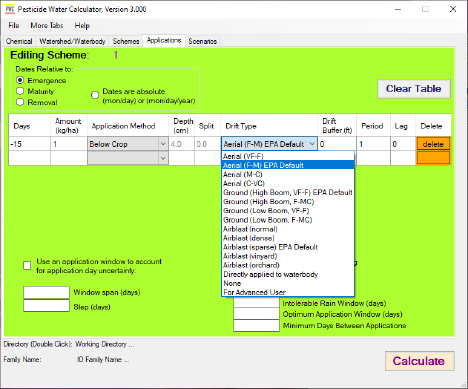Climate Change Impact Assessments

Waterborne has significant expertise in environmental fate modeling and climate data that enables us to combine this information and look at behavior of pesticides under different climate change scenarios.
![]()
Creating scenarios to determine pesticide behavior
Have you ever wondered how chemical use, chemical environmental fate as well as pest pressures change due to climate change? Our team of experts supports a wide variety of services to determine the challenges due to erratic climate and weather and their impacts on pesticide fate, future pest distributions, and water quality.

Do you have questions about our Climate Change Impact Assessment work?
Contact Waterborne's Global Climate Change Impact Assessments lead, Amy Ritter, at rittera@waterborne-env.com.
Chamber Workforce Programs
Our Climate Change Impact Assessments Work
Have you ever wondered how chemical use, chemical environmental fate as well as pest pressures change due to climate change? Our team of experts support a wide variety of services to determine the challenges due to erratic climate and weather and their impacts on pesticides fate, future pest distributions, and water quality.
We have significant expertise in environmental fate modeling and climate data that enables us to combine this information and look at behavior of pesticides under different climate change scenarios. Although no regulation is in place to account for climate change in the registration process, knowing the efficacy of pesticides in a changing environment can provide insights in future registration impacts, shifts in application patterns, or market shares of your products and the impacts on water quality.
Not only pesticide fate is affected by changing weather patterns but also pests are on the move. Distributions may shift, and growth and number of generations per season can increase overall pest pressure. Using species distribution models, our experts combine observation, landscape, and climate information to predict current and future ranges of pests. When ranges contract, expand or shift, this will impact not only crops but also pesticide use patterns. This in turn will impact shifting market patterns.
Our expertise/services areas are:
- Regulatory Modeling
- Spatial Modeling
- Species Distribution Modeling
- Mitigation and Best Management Practice analysis
- Data Acquisition and Processing
- GIS and Remote Sensing








